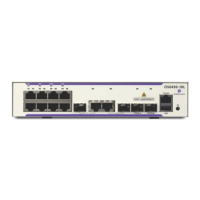Configuring Multi-chassis Link Aggregation MC-LAG Topologies
OmniSwitch AOS Release 7 Network Configuration Guide March 2011 page 8-13
MC-LAG Topologies
This section describes the building blocks that are used to construct more flexible and complex network
topologies. The recommended topologies for MC-LAG that are supported are:
• When all edge devices are attached to both MC-LAG peers at the core.
• When edge switches are connected through MC-LAG and core switches are dual-attached to non MC-
LAG interfaces.
For more information on MC-LAG topologies, refer to the following sections.
• “Basic MC-LAG Building Block” on page 8-13
• “Recommended Topologies” on page 8-13
• “Topologies Not Recommended” on page 8-15
• “Unsupported Topologies” on page 8-15
Basic MC-LAG Building Block
The following diagram illustrates the basic building block that can be used to construct more flexible and
complex network topologies. The building block below can be used to connect to the edge or core devices
in the network and is comprised of two OmniSwitch 10K chassis with a VFL link configured between
them.
MC-LAG Building Block
Recommended Topologies
The following topologies are recommended to support MC-LAG:
• MC-LAG at L2 Core
• MC-LAG at Aggregation Layer
MC-LAG at the L2 Core
In the topology shown below, all edge devices are attached to both MC-LAG peers at the core. Spanning
Tree is not needed in this network because there are no loops. In this topology, the physical loop around
the MC-LAG ports and Virtual Fabric Link is prevented by the MC-LAG.
LINEAR BLOCK
Virtual Fabric Link

